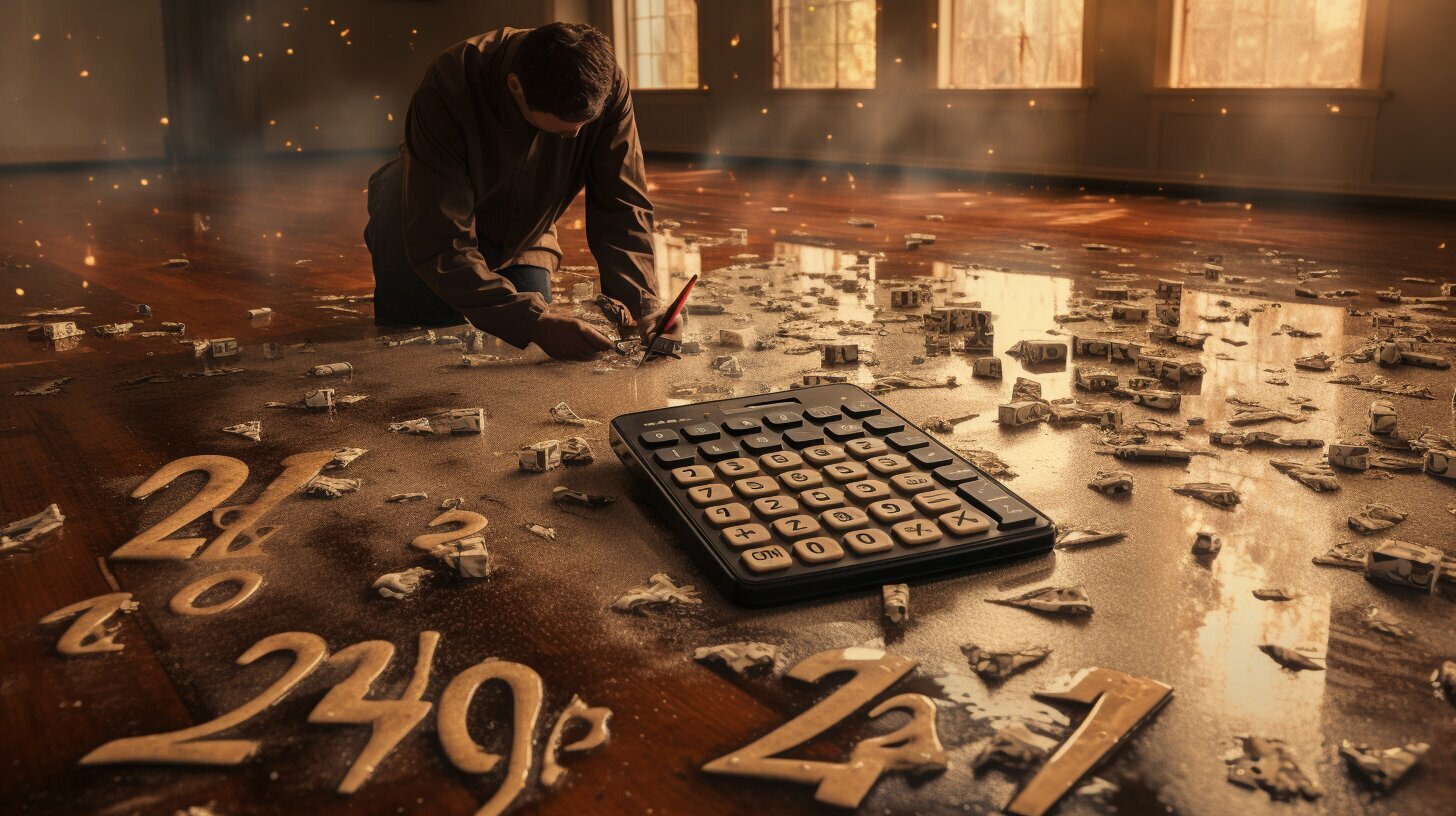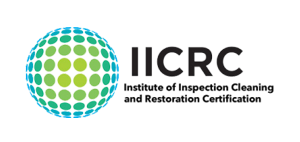Water damage repair costs can vary significantly depending on various factors, including the extent and category of the damage. If you’re dealing with water damage in your home or property, it’s important to understand the potential costs involved in the restoration process. In this article, we will explore the different factors that can influence the cost of water damage repair, as well as provide insights into average costs for different types of water damage and specific repairs. Additionally, we’ll discuss the importance of hiring professionals for water damage restoration and provide prevention tips to help you avoid costly damage in the first place.
Key Takeaways:
- The average cost of water damage restoration ranges from $1,300 to $5,600.
- Factors such as the category and extent of the damage can impact the cost.
- There are three categories of water damage: clean water, gray water, and black water.
- Cleaning up after clean water damage typically costs around $3 to $4 per square foot.
- Gray water damage restoration costs $4 to $7 per square foot, while black water restoration costs between $7 and $7.50 per square foot.
- The class of water damage also affects the cost, with Class 1 being the least expensive and Class 4 being the most expensive.
- Specific repairs, such as roof repair, hardwood floor repair, drywall repair, and ceiling repair, can add to the overall cost.
- Hiring professionals for water damage restoration is recommended to ensure proper cleanup and prevent further issues.
- Prevention tips can help you avoid water damage and the associated costs.
- A cost breakdown of water damage restoration can help you understand the different components of the overall cost.
Factors Affecting Water Damage Repair Cost
Several factors play a role in determining the cost of water damage repairs, including the size of the affected area and the complexity of the restoration process. Whenever water damage occurs, it is crucial to assess the extent of the damage to determine the appropriate course of action. The larger the area affected, the higher the cost of repairs. Additionally, the complexity of the restoration process, such as the presence of structural damage or the need for mold remediation, can significantly impact the overall cost.
Another factor to consider is the category of water damage. There are three categories: clean water, gray water, and black water. Clean water, typically from a broken pipe or a supply line, is the least expensive to repair. Gray water, which may contain contaminants and comes from sources like washing machines or dishwashers, requires additional precautions and costs more to restore. Finally, black water, which is highly contaminated from sewage backups or floodwater, is the most expensive to clean up due to the risks involved.
The class of water damage is also a crucial factor in determining the cost. Class 1 represents minimal damage, such as a small area affected by water, and is usually the least expensive to repair. On the other hand, Class 4 signifies extensive damage, often involving multiple rooms or floors, and can be the most expensive, ranging from $20,000 to $100,000.
In addition to the above factors, labor costs, emergency callouts, and geographic location also contribute to the overall cost of water damage repairs. Labor costs vary depending on the complexity of the restoration process and the number of professionals required. Emergency callouts, especially after-hours or during holidays, may incur additional charges. Furthermore, the cost can vary based on the region due to differences in local labor rates and availability of specialized services.
Categories and Classes of Water Damage
Water damage can be classified into three categories based on the source of the water, and each category requires different restoration methods and costs. The first category is clean water damage, which comes from a clean and sanitary source such as a broken pipe or overflowing sink. Restoration for clean water damage typically involves drying and dehumidification, with an average cost of around $3 to $4 per square foot.
The second category is gray water damage, which includes water that is slightly contaminated and may contain chemicals or pollutants. This could result from a malfunctioning dishwasher or washing machine. Gray water damage restoration costs range from $4 to $7 per square foot and may involve additional steps such as decontamination and odor removal.
The third and most severe category is black water damage, which comes from unsanitary sources like sewage backups or floodwaters. Black water poses serious health risks and requires specialized restoration techniques. The cost of black water restoration ranges from $7 to $7.50 per square foot.
Classes of Water Damage
Water damage is further classified into different classes based on the extent of the damage and the affected area. Class 1 represents the least amount of damage, typically affecting only a small area with minimal moisture absorption. The cost for Class 1 restoration is relatively low, ranging from $150 to $400.
As the damage progresses to Class 2, the affected area and amount of moisture increase, requiring more extensive restoration. Class 2 restoration costs can range from $1,000 to $3,000, depending on the size and severity of the damage.
Class 3 water damage involves situations where water has saturated walls, ceilings, and floors, resulting in significant damage. The restoration cost for Class 3 can range from $3,000 to $8,000.
Lastly, Class 4 represents the most severe level of water damage, where structural materials and contents are extensively affected. Restoration for Class 4 damage becomes complex and costly, with estimates ranging from $20,000 to $100,000.
Specific Repair Costs for Water Damage
Water damage can lead to additional repair needs, such as fixing roofs, repairing hardwood floors, patching drywall, and addressing damaged ceilings. The costs for these specific repairs can vary depending on various factors.
Roof repair
Roof repairs are essential when water damage occurs. The average cost for roof repair ranges from $300 to $1,000, depending on the extent of the damage and the type of roofing material used. It is crucial to address any leaks or damage promptly to prevent further water intrusion.
Hardwood floor repair
If water damage affects hardwood floors, it is vital to act quickly to minimize the extent of the damage. The average cost for hardwood floor repair can range from $2,000 to $5,000, depending on the square footage affected and the type of wood used for the flooring.
Drywall repair
Patching drywall is a common repair needed after water damage. The average cost for drywall repair can range from $200 to $600, depending on the size of the affected area and the complexity of the repair. It is essential to address any water-damaged drywall promptly to prevent mold growth and structural issues.
Ceiling repair
Water damage can cause ceilings to sag or develop stains. The average cost for ceiling repair can range from $400 to $1,000, depending on the size and complexity of the repair. It is important to address ceiling damage promptly to avoid potential safety hazards and further structural damage.
Hiring professionals for water damage restoration can ensure that these specific repairs are handled properly and efficiently. They have the expertise and equipment to assess the extent of the damage, provide accurate cost estimates, and perform the necessary repairs to restore your property to its pre-damaged condition.
By addressing these specific repair needs and hiring professionals, you can mitigate the impact of water damage and prevent further issues in the future.
Hiring Professionals for Water Damage Restoration
To ensure proper cleanup and prevent future complications, it is crucial to hire professionals for water damage restoration. When faced with water damage in your home or property, it may be tempting to try and handle the cleanup yourself. However, water damage restoration is a complex process that requires specialized knowledge and equipment.
By hiring professionals who specialize in water damage restoration, you can have peace of mind knowing that the job will be done effectively and efficiently. These experts have the training, experience, and tools necessary to assess the extent of the damage, remove excess water, dry the affected areas, and prevent mold growth.
Prevent Further Issues
One of the key reasons to hire professionals for water damage restoration is to prevent further issues. Even if the visible signs of water damage are addressed, hidden moisture can still linger within walls, floors, and other areas. This hidden moisture can lead to structural damage, mold growth, and potential health hazards.
Professionals use advanced techniques such as moisture meters and thermal imaging cameras to detect hidden moisture and ensure comprehensive drying. They also know how to properly handle and dispose of contaminated materials, protecting you and your loved ones from potential health risks.
Prevention Tips for Water Damage
Taking preventative measures can help minimize the risk of water damage and potentially save you from costly repairs. Here are some useful tips to keep in mind:
1. Regularly inspect and maintain your home
Inspect your roof, gutters, and downspouts regularly to ensure they are in good condition and free from any blockages. Repair any damaged or missing shingles, as well as any leaks or cracks in the foundation. Proper maintenance of your home’s exterior can help prevent water from seeping in and causing damage.
2. Install and maintain proper drainage
Make sure your property has effective drainage systems in place, including properly graded landscaping and a functioning sump pump. Consider adding extensions to downspouts to direct water away from your foundation. Ensuring proper drainage can help prevent water accumulation and potential flooding.
3. Be mindful of indoor water usage
Regularly inspect and maintain your plumbing system, including pipes, faucets, and toilets. Look out for any signs of leaks, such as water stains or mold growth, and address them promptly. Additionally, be cautious when using appliances that involve water, such as washing machines and dishwashers, and ensure they are properly connected and functioning.
4. Protect vulnerable areas in your home
Consider installing water leak detection devices in areas prone to water damage, such as basements, laundry rooms, and bathrooms. These devices can alert you to potential leaks or bursts, allowing you to take quick action. You may also want to consider installing a water alarm system that can detect rising water levels and notify you immediately.
By following these prevention tips and staying proactive, you can reduce the risk of water damage in your home and potentially avoid costly repairs. Remember to seek professional help for any water damage restoration needs to ensure proper cleanup and prevent further issues. Stay vigilant and protect your home from water damage!
Cost Breakdown of Water Damage Restoration
Understanding the breakdown of costs involved in water damage restoration can help you better plan and budget for these expenses. The average cost of water damage restoration ranges from $1,300 to $5,600, depending on various factors. One of the major factors that determine the cost is the category of water damage. There are three categories: clean water, gray water, and black water. The cost of cleaning up after clean water damage typically falls between $3 to $4 per square foot. For gray water damage restoration, you can expect to pay between $4 to $7 per square foot. However, if you’re dealing with black water damage, the restoration costs can range between $7 and $7.50 per square foot.
The class of water damage also influences the cost of restoration. Class 1, which refers to minimal damage, is the least expensive to repair, with costs ranging from $150 to $400. On the other hand, Class 4, which indicates extensive damage, can cost anywhere from $20,000 to $100,000. These costs may vary depending on the extent of the damage and the specific restoration methods required.
In addition to the category and class of water damage, other factors that contribute to the overall cost include labor, emergency callouts, and geographic location. Hiring professionals for water damage restoration is highly recommended to ensure proper cleanup and prevent further issues. Although it may seem costly, their expertise and equipment can save you money in the long run by preventing additional damage and reducing the risk of future problems.
It’s also important to consider the cost of specific repairs that may be necessary after water damage. This could include roof repairs, hardwood floor repairs, drywall repairs, and ceiling repairs. The extent of these repairs will depend on the severity of the water damage and the materials involved. It’s advisable to consult with professionals to assess the damage and provide accurate cost estimates for the required repairs.
By understanding the cost breakdown of water damage restoration and taking preventative measures to avoid water damage, you can effectively plan and budget for these expenses. Remember, early intervention is key when it comes to water damage, so don’t hesitate to seek professional help if you suspect any issues in your property. Taking swift action can help minimize damage and ultimately save you money in the long run.







